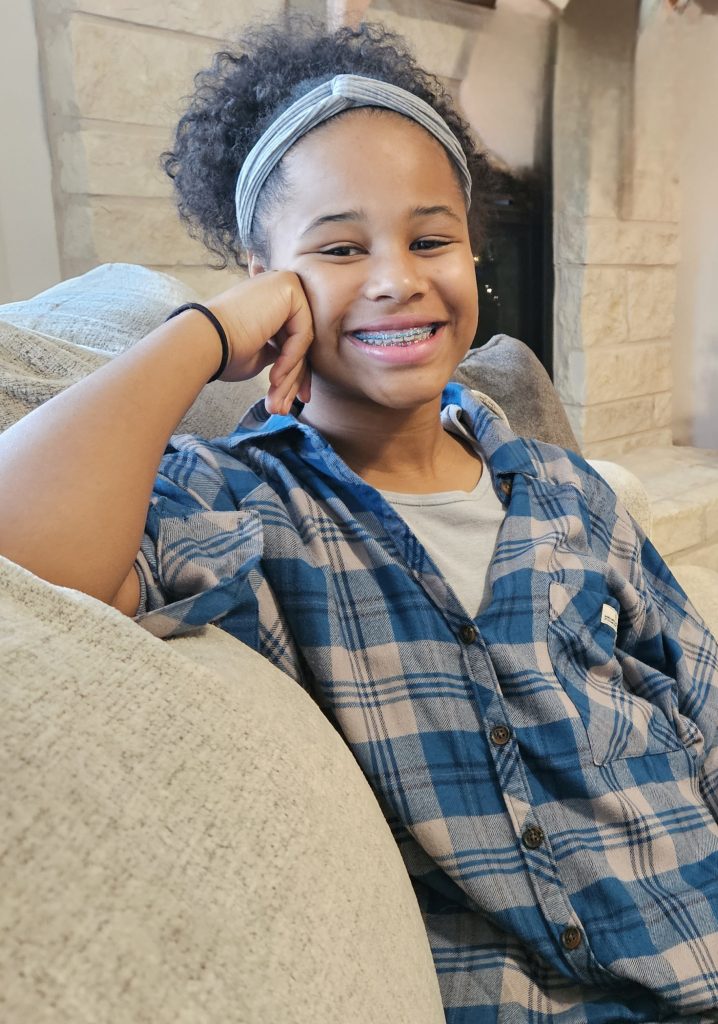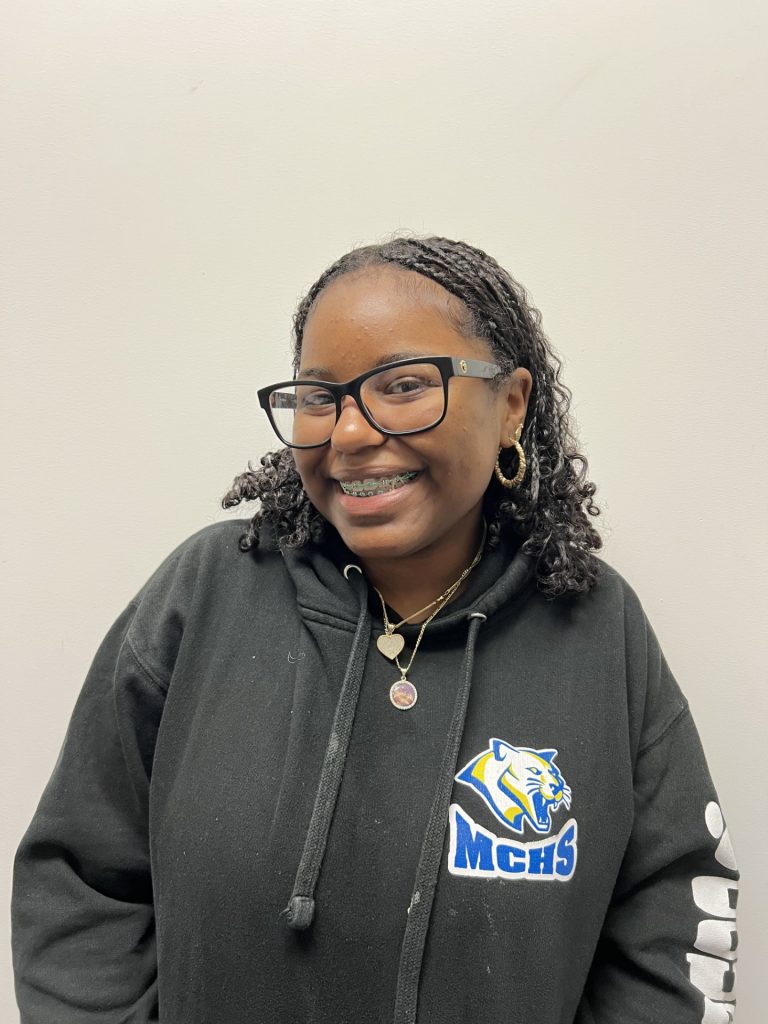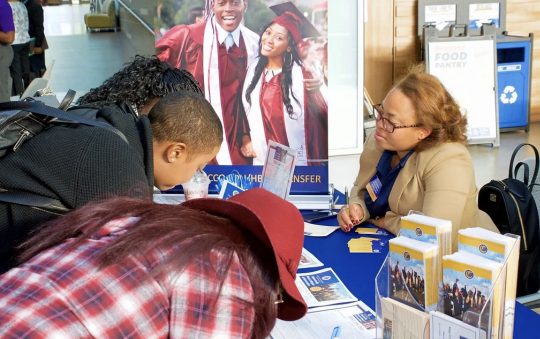
Three students were named winners of the Black History Month Essay Contest sponsored by the Los Angeles Unified School District. The winners, which were selected from hundreds of entries, represent the elementary, middle and high school categories.
The honorees are Carter Lang, grade 2, Overland Avenue Elementary School; Chloé Andrews, grade 8, Girls Academic Leadership Academy Dr. Michelle King School for STEM; and Londyn Batiste, grade 10, Middle College High School.
Related Stories
Waters Salutes 40th Anniversary of Hobson’s Ariel Investments
Roger Guenveur Smith: ‘I, Too, Am ‘Africa’ America’
Below are the winning essays:
Corey Barksdale
By Carter Lang
Mr. Barksdale is still alive and was born in Nashville, Tennessee. He graduated from the Atlanta College of Art with a Batchelor of Fine Arts degree in 1994. His pictures have been in movies, tv shows, and on book covers and posters and are in museums.
When I look at artist Corey Barksdale’s painting, I feel like mixing colors while painting! Mr. Barksdale’s art is colorful and creative and cool. His art looks great!!! He uses primary colors red, blue, and yellow, and also other colors like green, white,, black and orange. He mixes colors to make a good background. He makes designs that look so realistic!
There is one picture by Mr. Barksdale that is so cool. The picture is about two men, one playing the guitar and the other one playing the violin. They are both wearing cool hats that men used to wear. And they are dressed nicely. Mr. Barksdale’s art looks like he took a picture of the two men and then colored them!!! It made me feel like I was watching the men play music and I really liked that. When I grow up, I will put that picture in my house. I think that a lot of people will be inspired by it.
Mr. Barksdale is my favorite artist because his painting style is not only colorful, but it makes me feel good. He paints people that look lie me and we get to see the community through his eyes. I like to paint and draw and ever since I learned about his art, I try to copy his style by using a lot of colors. Maybe one day, I can paint a picture that makes people feel good the way his art does.

Black on the Page
By Chloé Andrews
Books are truly an art form that string together words of different experiences, feelings and dreams. It is truly my most beloved and celebrated art genre; however, I didn’t realize how much I loved books until the COVID shutdown of 2020. I found solace in the worlds created by the authors and peace when I was able to get lost in a space and time that was far different than my current reality.
At the beginning of middle school, I chose popular books in the media, such as the “Hunger Games,” “Percy Jackson,” “Twilight” and “The Fault In Our Stars.” I devoured these books, but as I read more and more, I felt that something was missing. It took me a bit to realize that what I longed for was a story where I, a Black girl in America, could see myself and my people in the stories on the page. I longed for a character who looked like me and was written by someone like me.
Two years ago, I discovered “Legendborn” by Tracy Deonn, and it opened a door to a whole new world for me. When I first saw the book cover with a Black girl front and center, I was so excited and then my awe only grew as I was introduced to Bree Matthews. I was further enthralled as I read more, she, Bree, was me.
Black authors such as Tracy Deonn, Tiffany D. Jackson, Kwame Alexander and Toni Morrison have allowed me to feel represented in literature. They introduce powerful Black characters who are saving the world, fighting legends and monsters and discovering themselves while being authentic. Reading books by Black authors has allowed me to grow in love with the art of literature even more and for this I am so very thankful.

The Important Role of HBCUs
By Londyn Batiste
I am dedicated to supporting HBCUs being that Clark Atlanta is my dream college, I am confident in promoting educational fairness and actively participating in projects that uplift these establishments, acknowledging their crucial role in empowering the African American community.
HBCUs had a profound impact on providing African American art and culture throughout American history. Being in supporting African American artists, these institutions have offered opportunities for self-expression, identity, and the questioning of social understanding.
HBCUs play a crucial role in fostering African American art by providing education. These establishments create spaces where artists can acquire formal training, guidance, and mentorship. With dedicated art programs and supportive faculty, African American artists have been empowered to enhance their abilities and nurture their unique artistic expressions across numerous generations.
They have also played a big role as centers of culture, allowing African American artists to display their creations and connect with a wide range of individuals. These establishments have organized art shows, live performances, and informative talks, offering artists a platform to convey their unique stories, viewpoints, and challenges.
Historically Black Colleges and Universities have powered African American creativity and passion. These institutions have not only encouraged artistic expression but have also dedicated themselves to safeguarding and honoring African American culture and customs. By offering comprehensive educational programs, HBCUs shed light on the profound influence of African American artists on the wider art community.
\By recognizing and praising these artists achievements, HBCUs actively fight stereotypes, challenge discrimination, and promote cultural pride. These institutions contribute not only to education and culture but also to advocating for social change and justice. African American artists, through their art, address important issues like racism, inequality, and injustice, promoting empathy, unity, and activism.
Historically Black Colleges and Universities play a big role in advancing education, culture, and advocating for social change, amplifying marginalized voices, and fostering discussions on fairness and inclusivity.







